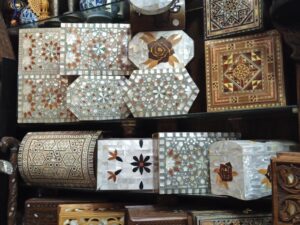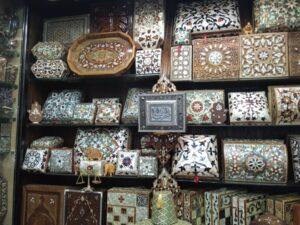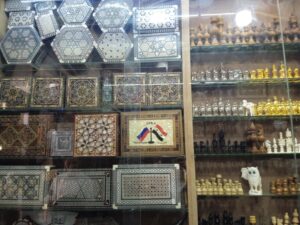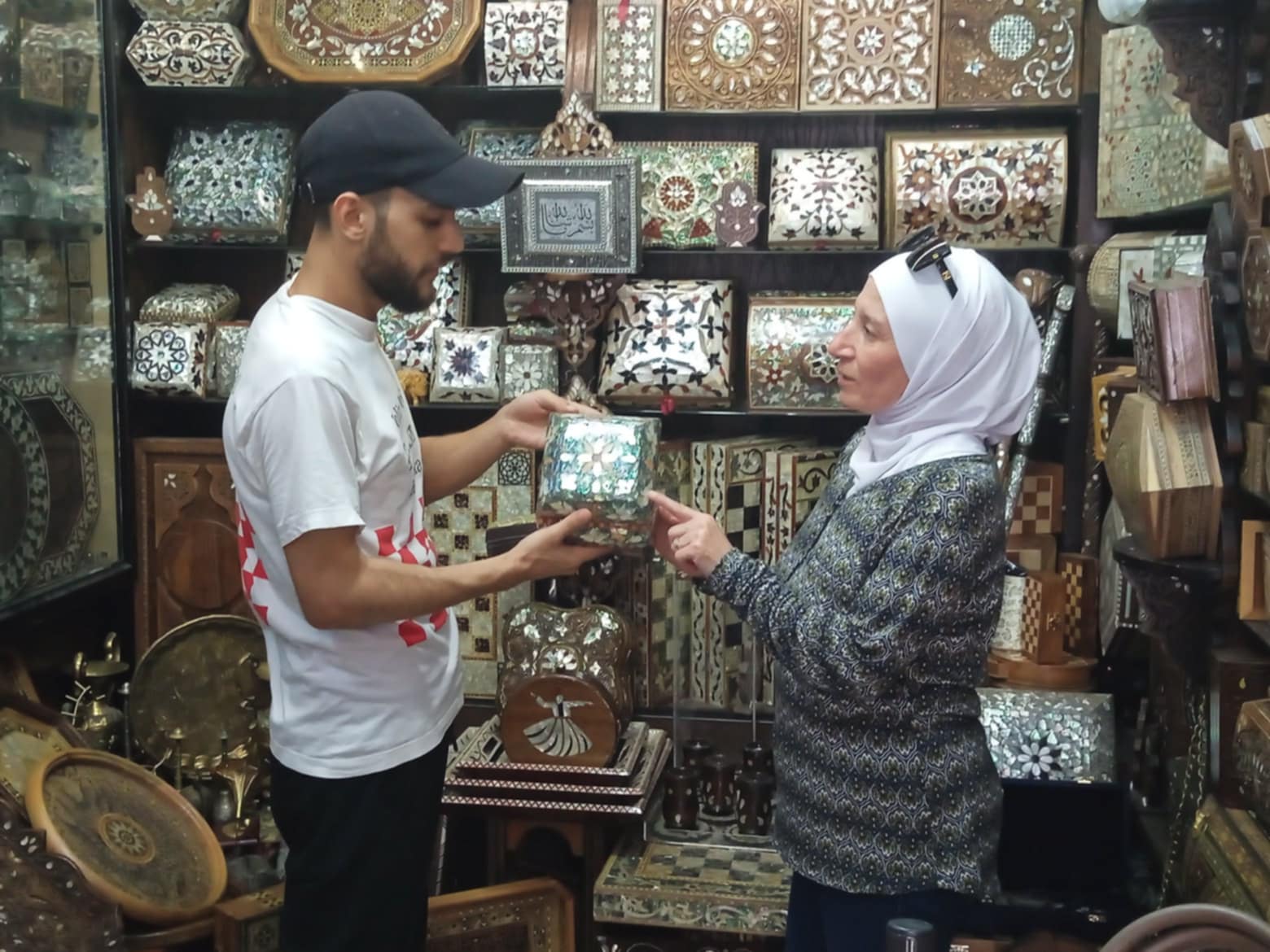Damascene mosaic is considered one of the beautiful traditional artistic crafts that decorate some archaeological sites in Syria, such as “Al-Azem Palace”.
This deep-rooted Syrian traditional craft spread from Damascus to decorate many temples throughout the world, such as the Vatican in Rome and the Church of Julian the Poor in Paris.
Shedding light on this unique craft which Damascus city is famous for, Syriatimes e-newspaper visited the craftsman Fadi Salloum at his workshop in Al-Hameidyeh market.
“One can hardly find a house in Damascus or Damascus countryside that doesn’t contain a Damascene mosaic piece. Such handicrafts give value to human thought as they imitate ancient heritage and history through distinctive artistic pieces of high value,” Mr. Salloum said.
 He pointed out that this profession, which is more than 300 years old, depends mainly on the imagination of the craftsman in inlaying and engraving wood and transforming it into beautiful artistic forms, in which all types of trees including walnut, eucalyptus, lemon, Damascene rose, beech, apricot, olive, and others are used in its manufacture.
He pointed out that this profession, which is more than 300 years old, depends mainly on the imagination of the craftsman in inlaying and engraving wood and transforming it into beautiful artistic forms, in which all types of trees including walnut, eucalyptus, lemon, Damascene rose, beech, apricot, olive, and others are used in its manufacture.“This art is still existing despite the circumstances of the terrorist war on Syria. The craftsmen, whose profession depends for its revenues on tourism, have continued to work despite the many repercussions of the war because their motivation is art and beauty and emphasizing the values of heritage, beauty, homeland and love in the face of all circumstances” the craftsman Salloum said.
 This craft, according to Mr. Salloum, requires patience and precision, crowned by art. He takes the tree trunk and cuts it in an artistic way into soft sticks with geometric shapes and different colors, relying on simple tools. Then these sticks are combined and glued with a special adhesive to hold them together, resulting in wonderful designs that carry the spirit and feeling of the skilled craftsmen.
This craft, according to Mr. Salloum, requires patience and precision, crowned by art. He takes the tree trunk and cuts it in an artistic way into soft sticks with geometric shapes and different colors, relying on simple tools. Then these sticks are combined and glued with a special adhesive to hold them together, resulting in wonderful designs that carry the spirit and feeling of the skilled craftsmen.Salloum’s father has been working in the profession of Damascene mosaic for 45 years, and each piece he creates tells a story of love in which his feelings and sentiments mix, to eventually come out in the form of a Damascene masterpiece bearing the history of the city and the nobility of its name.
He pointed out that the completed piece of art may be small boxes , pieces of salon furniture, office or bedroom decorations, chairs, doors, Chess, mirrors, backgammon, swords, daggers inlaid with mother-of-pearl , which gives it added artistic value.
 The craftsman stressed that Damascene mosaic is a craft that has a history and nobility that cannot end because it bears the name of Damascus with its great history.
The craftsman stressed that Damascene mosaic is a craft that has a history and nobility that cannot end because it bears the name of Damascus with its great history.“We must do our utmost to preserve our tangible and intangible heritage, which represents the identity of our country, and encourage young people to master such traditional crafts to protect them from extinction” Salloum expressed.
“We are very proud when we see the interest of Arab and foreign tourists in acquiring these wonderful pieces of art that reflect the ancient civilization of this country” the craftsman concluded.
It is to be noted that Damascus, the oldest inhabited capital in history, is always capable of astonishing those who visit it with its industry, various crafts, houses and trees. Damascene mosaic is one of the most important crafts that leaves a permanent indelible mark which are impossible to forget by the visitors to Damascus.
Interviewed by : Rawaa Ghanam
Photos by : Rawaa Ghanam

